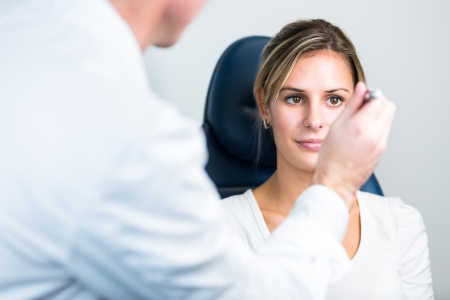Understanding Laser Hair Removal: A British Perspective
In the UK, laser hair removal has become an increasingly popular solution for those seeking long-term reduction of unwanted hair. British clinics are held to strict regulatory standards set by bodies such as the Care Quality Commission (CQC) in England and Healthcare Improvement Scotland (HIS), ensuring patient safety and professional conduct. Leading technologies, including diode, Alexandrite, and Nd:YAG lasers, are widely adopted across reputable clinics, with practitioners trained to tailor treatments to diverse skin types and hair colours. British clients typically expect a personalised consultation before treatment, where risks, pain management strategies, and likely side effects are openly discussed. The emphasis on transparency and aftercare reflects a uniquely British approach—prioritising patient education, informed consent, and realistic outcome expectations within a regulated framework.
2. Common Side Effects: Insights from UK Practitioners
When considering laser hair removal, understanding the range and prevalence of potential side effects is crucial for anyone seeking treatment in the UK. British dermatologists and aesthetic practitioners consistently report a set of common reactions among their clients, which typically reflect both the high standards of UK clinical practice and patient expectations. Below is a breakdown of these frequently reported side effects, alongside expert commentary highlighting what clients should be aware of and how these are best managed within a British healthcare context.
| Side Effect | Description | Prevalence (UK Estimates) | Expert Commentary |
|---|---|---|---|
| Redness and Swelling | Mild inflammation around treated follicles, often likened to sunburn | Very Common (up to 85% of clients) | “Typically subsides within a few hours; cool compresses recommended,” notes Dr. Helen Martin, Consultant Dermatologist, London. |
| Tingling or Mild Discomfort | A brief stinging sensation during or immediately after treatment | Common (60-70%) | “Clients describe it as an elastic band snap—minimal but noticeable,” says Aesthetic Nurse Specialist, Rachel Evans, Manchester. |
| Pigment Changes | Slight darkening or lightening of skin in the treated area | Occasional (10-15%) | “More prevalent in those with darker complexions; patch testing is standard protocol in UK clinics,” observes Dr. Saira Ahmed, Medical Director, Birmingham. |
| Dryness or Itchiness | Sensation of tight or flaky skin post-treatment | Moderate (30-40%) | “A gentle British-made moisturiser usually resolves this swiftly,” advises Skin Therapist Emily Clarke, Edinburgh. |
| Rare Complications | Blistering, scarring, or infection (when aftercare is neglected) | Rare (<1%) | “Strict adherence to post-laser care instructions minimises risk significantly,” confirms Dr. Oliver Grant, Harley Street Clinic. |
This table reflects not only the most commonly experienced side effects by British clients but also highlights the proactive measures and advice routinely provided by UK experts. The consensus among practitioners is that while minor discomforts are to be expected, serious adverse events remain extremely rare when procedures are carried out by qualified professionals under strict regulatory guidelines—a core principle upheld across reputable clinics in the United Kingdom.
![]()
3. Pain Management Strategies: Advice from British Experts
When it comes to laser hair removal, managing pain and discomfort is a top concern for both practitioners and patients across the UK. British experts emphasise that while modern laser technology has significantly reduced pain levels, individual experience can still vary based on skin type, treatment area, and personal sensitivity. To ensure a positive experience, clinics in the UK adhere to strict evidence-based protocols and patient-centred care principles.
Pre-Treatment Recommendations
Clinicians commonly advise patients to avoid sun exposure and tanning beds for at least two weeks prior to treatment, as tanned skin increases sensitivity and risk of side effects. Applying a topical anaesthetic cream—typically containing lidocaine—is often recommended 30-60 minutes before the session, particularly for sensitive areas such as the bikini line or underarms. Patients are also encouraged to communicate openly about their pain threshold so clinicians can adjust settings accordingly.
During Treatment: Minimising Discomfort
British clinics typically use advanced cooling devices or chilled air systems to numb the skin during laser application, which helps reduce discomfort. Some practitioners may employ “in-motion” techniques—where the laser is moved continuously rather than pulsed—which many patients find less painful. Clinics often offer stress balls or encourage controlled breathing techniques, especially for those experiencing anxiety about the procedure.
Aftercare: Evidence-Based Tips
Post-treatment, experts recommend applying a cold compress or aloe vera gel to soothe treated areas and reduce inflammation. Over-the-counter pain relief such as paracetamol may be suggested if mild soreness persists; however, patients are advised to avoid aspirin or ibuprofen immediately post-procedure due to potential impact on bruising. Wearing loose clothing and avoiding hot showers or saunas for 24-48 hours can also aid comfort and promote optimal recovery.
Tailored Approaches for British Patients
UK clinics increasingly personalise pain management plans by considering factors like Fitzpatrick skin type, previous pain experiences, and patient preferences. Practitioners routinely offer follow-up consultations to assess healing and adapt future sessions if necessary. With these strategies grounded in clinical best practice and responsive to British patient expectations, discomfort during laser hair removal can be effectively minimised while maximising safety and satisfaction.
4. Aftercare Essentials: British-Approved Practices
Guidance on Post-Laser Care in the UK
Proper aftercare is crucial to minimising discomfort and side effects following laser hair removal, and British experts emphasise a science-led, practical approach. Tailored aftercare helps reduce inflammation, prevent infection, and optimise treatment outcomes. The following guidance outlines best practices commonly recommended by UK professionals.
Recommended Products for Laser Aftercare
| Product Type | Example (UK Brands) | Purpose |
|---|---|---|
| Soothing Gel | Aloe Vera Gel (Holland & Barrett) | Calms skin, reduces redness |
| Gentle Cleanser | Cetaphil Gentle Skin Cleanser | Cleans without irritation |
| Fragrance-Free Moisturiser | E45 Cream, Aveeno Daily Moisturising Lotion | Keeps skin hydrated, supports healing |
| Sunscreen (SPF 30+) | La Roche-Posay Anthelios, Boots Soltan Sensitive Face Sun Cream | Protects treated area from UV damage |
| Anti-inflammatory Cream (if advised) | Bepanthen, Sudocrem | Reduces irritation, aids recovery (use only if recommended by your practitioner) |
Lifestyle Adjustments Post-Treatment
- Avoid hot baths, saunas, and steam rooms: For at least 48 hours post-treatment to minimise irritation.
- No vigorous exercise: Refrain from high-intensity workouts for 24–48 hours to prevent sweating-induced irritation.
- No tanning or sun exposure: Shield treated areas with clothing and use sunscreen to prevent pigmentation changes.
- Avoid perfumed products: Use fragrance-free body lotions and cleansers for up to a week post-treatment.
- No waxing or plucking: Stick to shaving between sessions as other hair removal methods can disrupt treatment efficacy.
Professional Aftercare Services in the UK
The majority of reputable clinics across the UK provide follow-up consultations as part of their service package. These appointments allow practitioners to monitor healing progress and address concerns such as persistent redness or rare complications. Many also offer access to helplines or digital advice platforms for ongoing support.
Key Points for British Patients:
- Always adhere to clinic-specific instructions provided by your practitioner.
- If you experience unusual side effects—such as blistering or prolonged swelling—contact your clinic promptly.
- Keep a record of any reactions and share this information during follow-up visits for tailored advice.
Your Trusted Aftercare Checklist:
- Use only recommended British pharmacy products on treated areas.
- Avoid direct sunlight; apply SPF even on cloudy days.
- Book professional check-ups if you notice adverse reactions beyond mild redness or sensitivity.
- Pace your return to normal activities based on expert guidance rather than personal comfort alone.
5. When to Seek Further Medical Advice: UK-Specific Guidance
While mild discomfort and temporary side effects are common after laser hair removal, it is crucial to recognise when symptoms may require professional intervention. According to NHS guidelines, individuals should contact their GP or an NHS walk-in centre if they experience severe pain, extensive blistering, signs of infection such as increasing redness, swelling, pus, or a fever. Persistent darkening or lightening of the skin that does not fade within a few weeks also warrants further assessment. In rare cases, allergic reactions—including widespread rash or difficulty breathing—necessitate immediate medical attention via NHS 111 or A&E.
Clear Signals for Contacting Healthcare Professionals
British dermatology experts emphasise the importance of monitoring your skin’s healing process post-treatment. If you notice worsening symptoms beyond the expected mild redness or swelling, or if home remedies recommended by your clinic (such as cool compresses or fragrance-free moisturisers) do not provide relief, it is advisable to consult your practitioner or a qualified medical professional. The NHS provides specific pathways for reporting and managing adverse events related to cosmetic procedures, ensuring you receive timely and appropriate care.
Utilising British Support Systems
Patients in the UK have access to a range of support systems designed for those undergoing aesthetic treatments. Besides direct consultation with your treatment provider, you can seek advice from local pharmacies trained in post-procedural care. Additionally, resources like the NHS website offer evidence-based guidance on recognising complications and next steps. For ongoing concerns or emotional distress following laser hair removal, organisations such as Mind and local patient advocacy groups can provide further support.
Summary: Proactive Care Within UK Standards
Ultimately, being proactive about unusual symptoms and understanding when to escalate concerns aligns with best practices outlined by British healthcare authorities. By leveraging NHS resources and expert advice, you ensure that any potential complications are managed swiftly and effectively, safeguarding both your health and peace of mind throughout your laser hair removal journey.
6. Trends and Innovations in the UK Laser Hair Removal Market
The laser hair removal landscape in Britain is evolving rapidly, propelled by cutting-edge technology and shifting patient expectations. Clinics across the UK are increasingly adopting advanced devices such as diode lasers and dual-wavelength systems, which offer enhanced precision and reduced discomfort. These innovations are particularly pertinent for those with sensitive skin or diverse skin tones, addressing previous limitations in efficacy and safety.
Personalised Treatment Protocols
British practitioners are moving towards more personalised care, utilising detailed skin assessments and patch testing to tailor treatments for individual needs. This bespoke approach not only optimises results but also plays a critical role in minimising pain and side effects, reflecting a broader trend towards patient-centric aesthetics.
Focus on Comfort and Aftercare
There is a growing emphasis on comfort, with clinics introducing integrated cooling technologies and soothing post-procedure products. Topical anaesthetics and advanced aftercare regimens—often developed in collaboration with dermatologists—are now standard offerings. These measures support a smoother recovery, catering to the British preference for discretion and minimal downtime.
Digital Consultation and Education
Digital tools are transforming patient engagement, with virtual consultations and tailored educational resources becoming commonplace. This empowers clients to make informed decisions about their treatment journey, aligning with the UK’s strong culture of transparency and trust in healthcare services.
Sustainability and Ethical Practice
Environmental concerns are shaping consumer choices; many UK clinics are prioritising sustainable practices, from energy-efficient devices to recyclable consumables. Ethical sourcing of equipment and cruelty-free aftercare products are increasingly important for British patients who value responsible beauty solutions.
Together, these trends underscore a market that is not just technologically advanced but deeply attuned to the values and wellbeing of its clientele. As innovation continues apace, British experts remain committed to delivering safe, effective laser hair removal experiences tailored to modern priorities.


